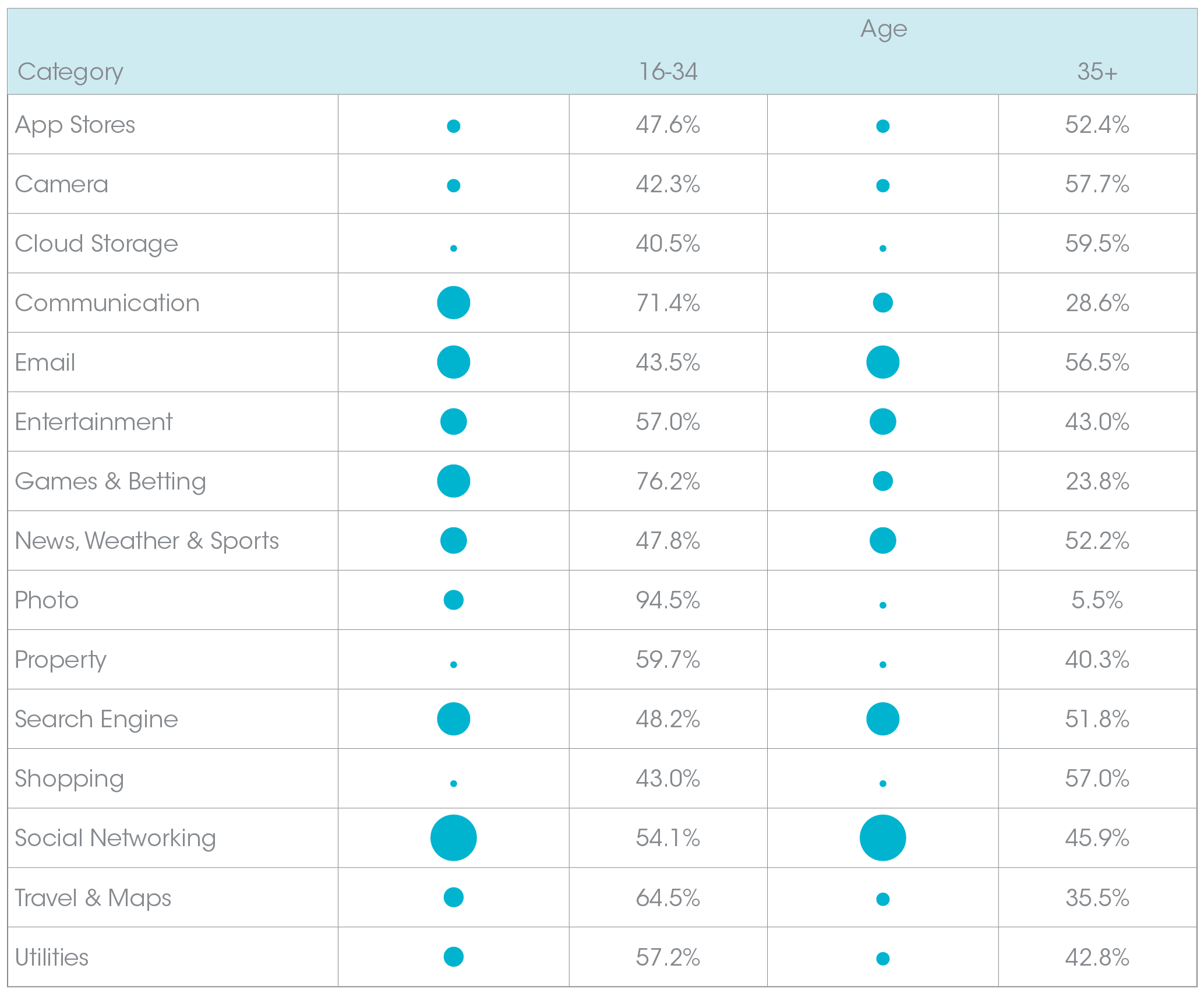Background
RealityMine collaborated with Behaviour & Attitudes (B&A) — Ireland’s largest independent market research company — and Eircom to evaluate the relative values of active and passive research.
Client Objective
We specifically looked at consumers’ stated digital behaviour versus their passively measured, actual behaviour, in an effort to help Eircom gain a better understanding of which services consumers actually appreciate versus those they say they appreciate, but don’t actually use.
Solution
We combined our passive metering technology, advanced analytics, and data fusion skills to enable B&A to compare and contrast actual behaviour versus stated behaviour.
We tracked the mobile behaviour of our users, including the websites they visited, the apps they used, the battery charging profile of an individual user’s phone, and how they used their phone to communicate. Specifically, we looked at how age impacts the way consumers use their mobile devices, and how mobile device usage differs between males and females.
All of this data was collected passively using RealityMine’s passive behaviour tools.
Results
Our collaborative research highlighted some interesting discrepancies between consumers’ stated versus actual behaviour, therefore confirming that recall answers are largely inaccurate. Passive monitoring overcomes this issue by collecting actual monitored behaviour.
The findings proved extremely illuminating to Eircom in terms of demonstrating how people really spend their time on their mobile devices. For example, research into how mobile use differs between males and females challenged the stereotypical belief that men use mobile devices more than women for gaming. Surprisingly, it also showed that men spend a longer time shopping on mobile devices than women.
Similarly, the research into how age impacts how mobile devices are used uncovered some interesting findings (see graph below), showing that the methods of communication used by 18-15 year olds are different to those favoured by the 35+ age group. It also showed that, whilst 18-35 year olds use social networking apps more than those aged 35+, this is the highest app category for mobile device use across both age groups.
For Eircom, our research highlighted the fact that there are substantial marketing opportunities that had not yet been tapped into, as well as opportunities to potentially reduce costs due to wastage.





